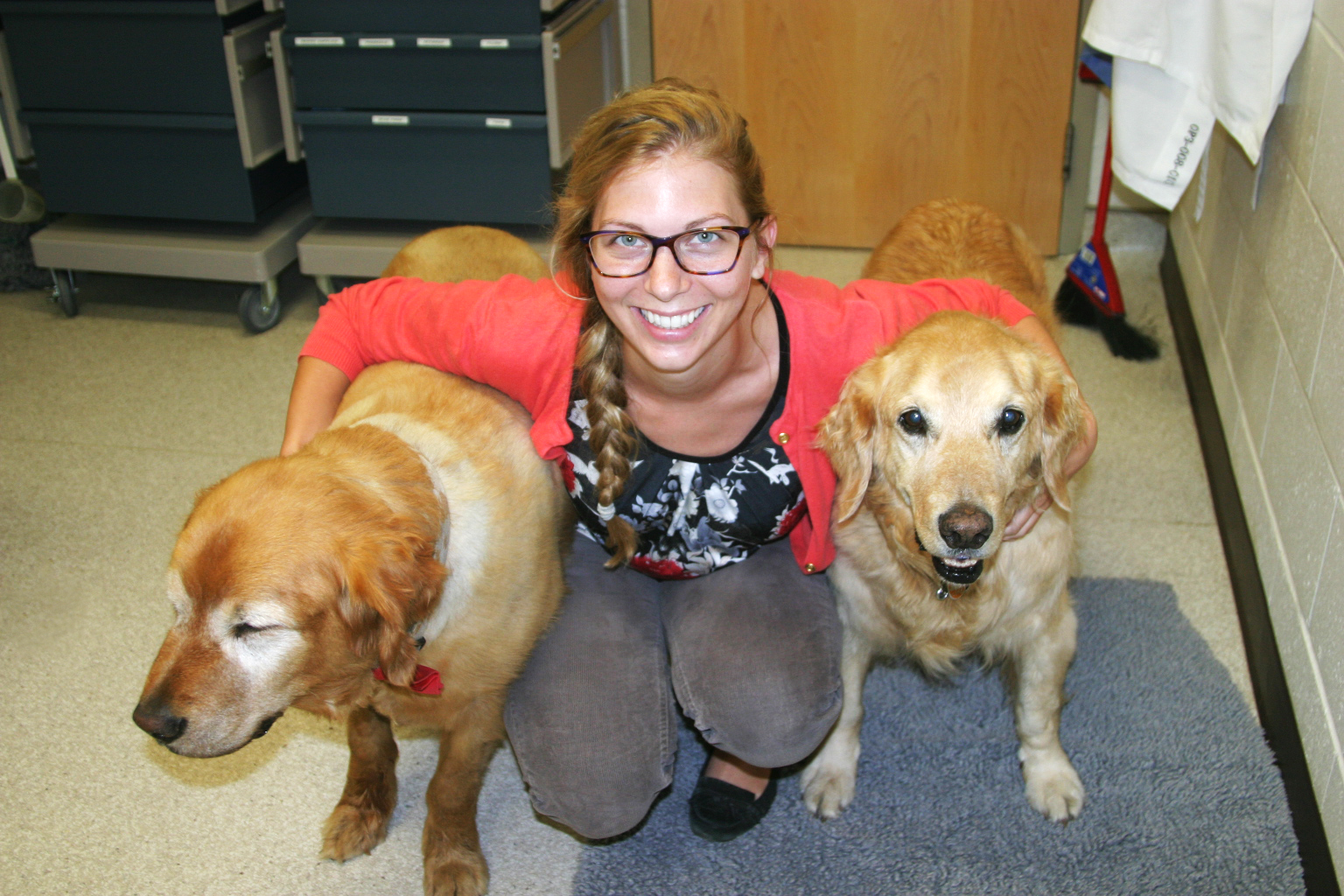
Tackling the Mysteries of Pigmentary Uveitis
Vanessa Holly shares her story of working with researchers at the WCVM to study a challenging eye disease. The following story originally appeared as part of a weekly series in WCVM Today.
I let out a sigh that erupts a plume of dust: I’ve hardly even made a dent in the mountain of paper before me.
So why would I spend my entire summer drowning in a sea of hospital records? Is this really worth it?
That’s when I remember the words of WCVM ophthalmologist Dr. Bruce Grahn: “Pigmentary uveitis is one of the most challenging inherited diseases we’ve dealt with in any breed of dog.”
Grahn kick-started this retrospective study of pigmentary uveitis (PU) after years of watching golden retrievers go blind from the disease and being unable to provide pet owners with any definite answers.
Also known as golden retriever uveitis or pigmentary and cystic glaucoma, PU is a painful, inherited eye disease in golden retrievers that often progresses to blindness.
Unfortunately, predicting which dogs will become diseased and when they will show clinical signs is nearly impossible — a fact that frustrates breeders and owners alike. Many golden retrievers are bred before they ever show signs of the disease, which means that the genetics responsible for PU can be unknowingly passed on to future generations.
“[PU] has an extremely variable onset. We don’t even know the mode of inheritance. I don’t think there’s a clean line in North America,” says Grahn, who is supervising my research along with WCVM ophthalmologists Drs. Lynne Sandmeyer and Bianca Bauer.
Despite growing concern about the disease, only four peer-reviewed research papers that focus on the disease have been published. The shortage of scientific literature targeting PU has led to a lot of confusion among practitioners and owners alike.
“[There are] always more questions than answers when it comes to PU,” says Linda Verges, who breeds golden retrievers in Calgary, Alta.
My project this summer was to help provide answers to some of the most commonly-asked questions. What proportion of western Canadian golden retrievers have PU? Are there early markers of the disease? What is the mode of inheritance: is it dominant or recessive?
The answers to these questions lay hidden in the vast pools of data stored in the Veterinary Medical Centre’s medical records. I spent two months compiling ophthalmology records, recording each appointment from every golden retriever seen at the WCVM in the past 10 years.

Having a decade’s worth of information is an invaluable resource that allows us to follow the progression of the disease. Past appointments of PU-affected dogs can be checked for any early indications of disease before the diagnosis was confirmed.
Access to a long-term database also gives us the ability to detect PU in multiple generations — data that’s essential for finding a mode of inheritance. In the absence of a genetic test, knowing the mode of inheritance can provide breeders with some guidance about decisions that will improve the health of their breeding lines.
To date, we have identified over 60 dogs diagnosed with PU or detected early markers of the disease from a family of 393 golden retriever dogs. Overall, we compiled data on more than 800 golden retrievers and achieved all of the goals of our study. Our results should be published in the near future.
So back to my first question: why would I spend my summer working with paper instead of puppies and kittens?
Because this project matters to everyone. I’ve spoken with owners devastated by the loss of eyesight in their best friends. I’ve met heartbroken breeders who have abandoned whole breeding lines. I’ve listened to frustrated veterinarians who can find neither a cause nor a cure.
The sad reality is that this is a painful, expensive disease — and it’s growing in numbers.
To all of the veterinary students who are looking for summer jobs, I urge you to keep an open mind and consider doing research. While clinical experience is important, there are many things to be learned from working in a research environment.
I’ve found more purpose with my project this summer than I ever anticipated, thanks to breeders such as Linda Verges and to the college’s team of veterinary ophthalmologists.
For me, this summer was a wonderful, “eye-opening” experience.
Vanessa Holly of Sherwood Park, Alta., is a third-year veterinary student who participated in the WCVM’s Undergraduate Summer Research and Leadership program in 2014.

